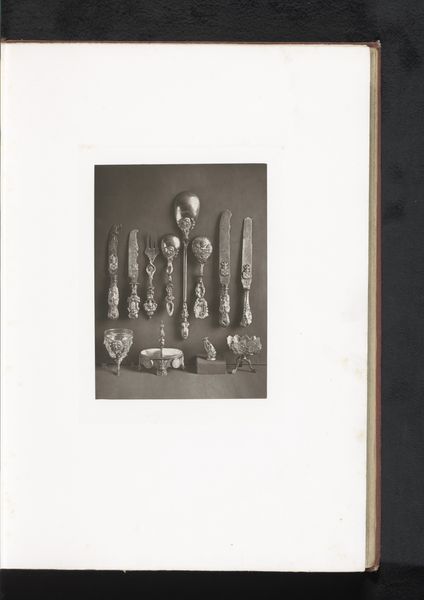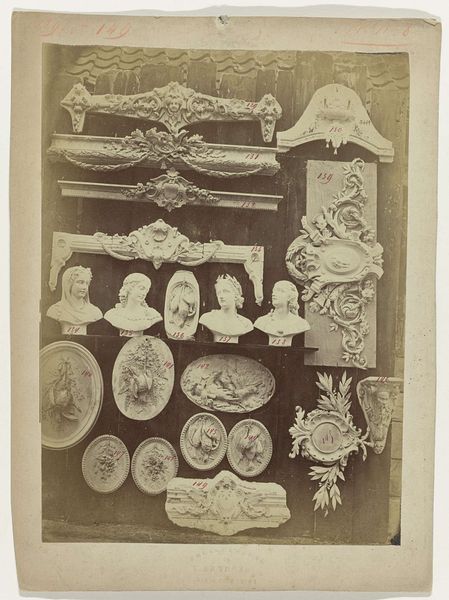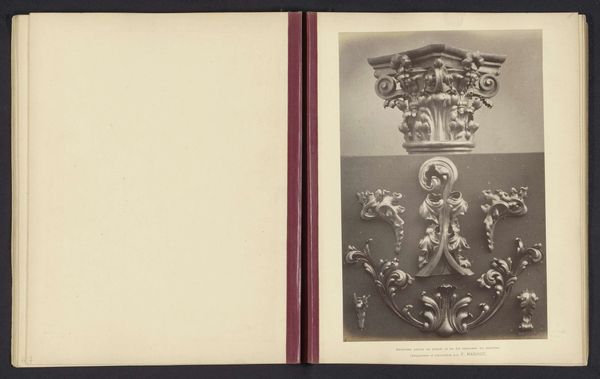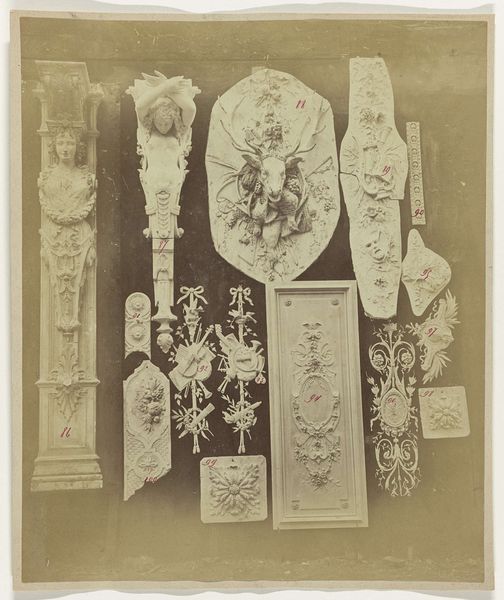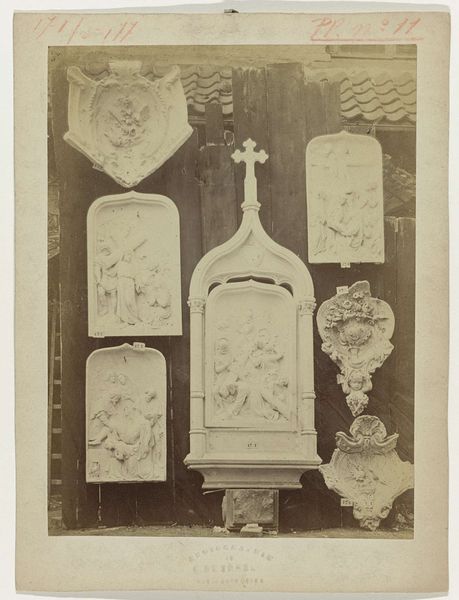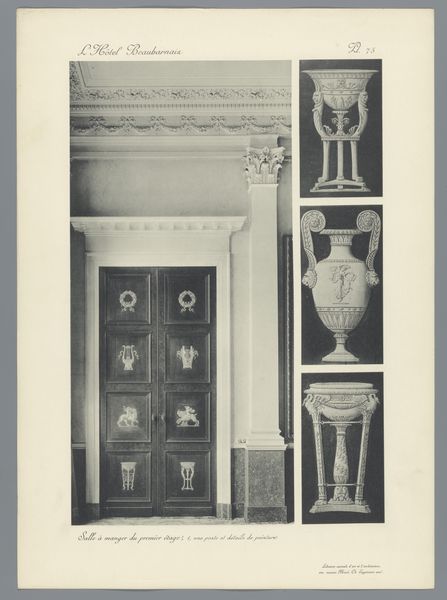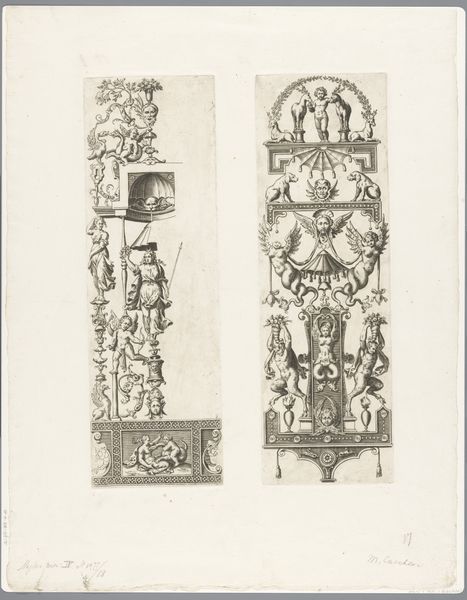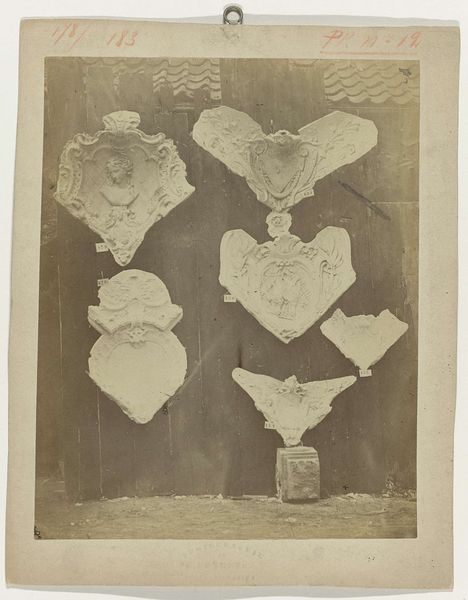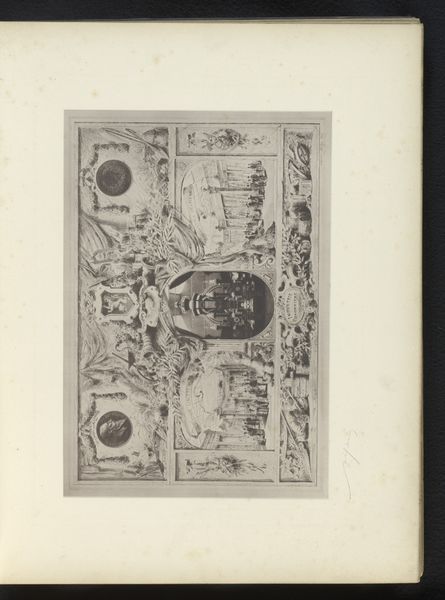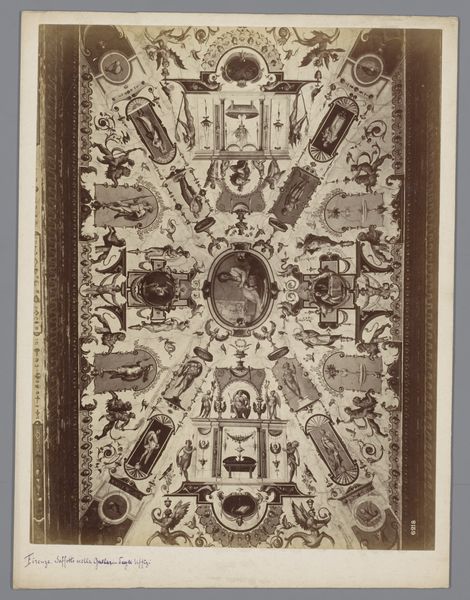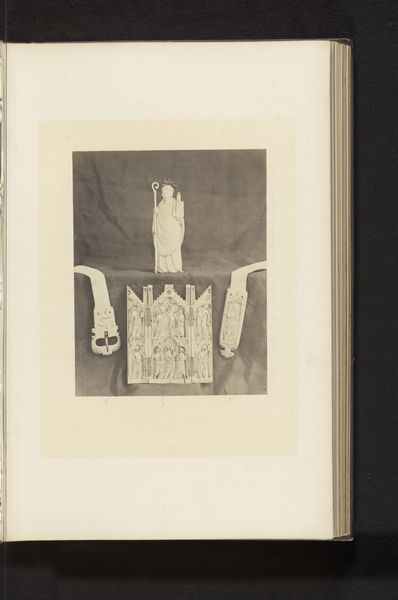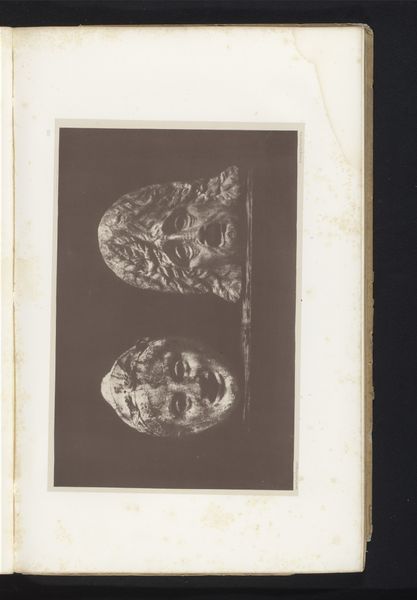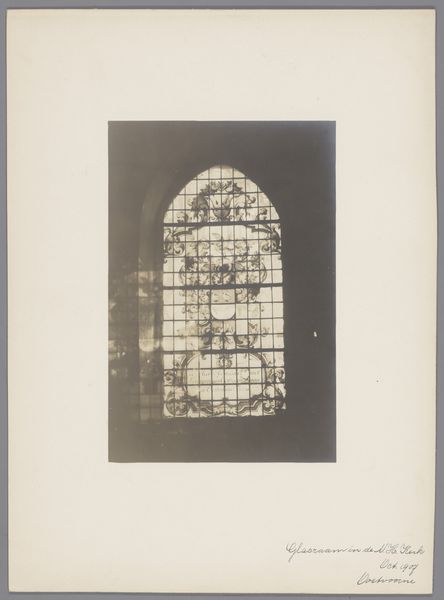
Compositie van gipsen ornamenten uit het atelier van J. Delbove, Brussel, België 1860 - 1882
0:00
0:00
print, photography, plaster
# print
#
photography
#
plaster
#
ceramic
#
decorative-art
Dimensions: height 230 mm, width 196 mm
Copyright: Rijks Museum: Open Domain
Curator: So, what's catching your eye first here? It's labeled as "Composition of Plaster Ornaments from the Atelier of J. Delbove, Brussels, Belgium," dating roughly from 1860 to 1882. Editor: Hmm, it's strangely compelling, this photographic catalog of plaster bits. It has a ghost-like presence... Makes me think about forgotten grandeur and the ephemeral nature of taste. Do people even *do* this kind of ornamentation anymore? Curator: Well, that’s part of its historical significance. This image acts almost as a sales catalogue. J. Delbove’s workshop would have offered these various plaster components for architectural and interior decoration. They speak to a moment of booming industrialisation when even traditionally hand-crafted elements could be ordered "off-the-rack." Editor: Ah, so it’s all about democratization through production. Still, something about the muted tones—the photo’s aged sepia feel, combined with the blank stares of those tiny cherubs—is giving me a very potent melancholy! They feel ripped from some grand scheme. Curator: And consider how photographs became vital in disseminating and standardizing designs. Architects and builders far and wide could access and replicate these motifs. Think about the role museums play in preserving and displaying plaster casts...It connects directly with how taste is disseminated! Editor: Makes you consider how ornament styles are marketed like seasonal clothing nowadays. Trends and branding—the whole history, really. Even those little cupids… did you see the chubby one holding something? A little banner perhaps? What secrets do those walls hide... Curator: A banner, or maybe an architectural detail of its own. Exactly! These weren't just isolated art pieces; they were cogs in a grand decorative machine. And this photograph helps us unpack the aesthetic ambitions and production realities of a bygone era. Editor: Yeah. This is more than decoration—it’s a reflection of our past obsession with beauty, how we shape and consume spaces. I keep going back to how mournful these bits appear and then there’s you, going "democratization!" Such is art: deeply confusing to one or perhaps it will all coalesce into that something "meaningful," but on *our* time, and not a curator’s clock!
Comments
No comments
Be the first to comment and join the conversation on the ultimate creative platform.
